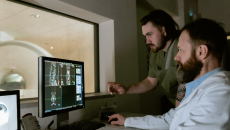
Paddy Padmanabhan is founder and CEO of Damo Consulting, a growth strategy and digital transformation advisory firm that works with healthcare enterprises and global technology companies. He is the host of The Big Unlock, a podcast focusing on healthcare digital transformation, and author of the book, The Big Unlock: Harnessing Data and Growing Digital Health Businesses in a Value-Based Era.






